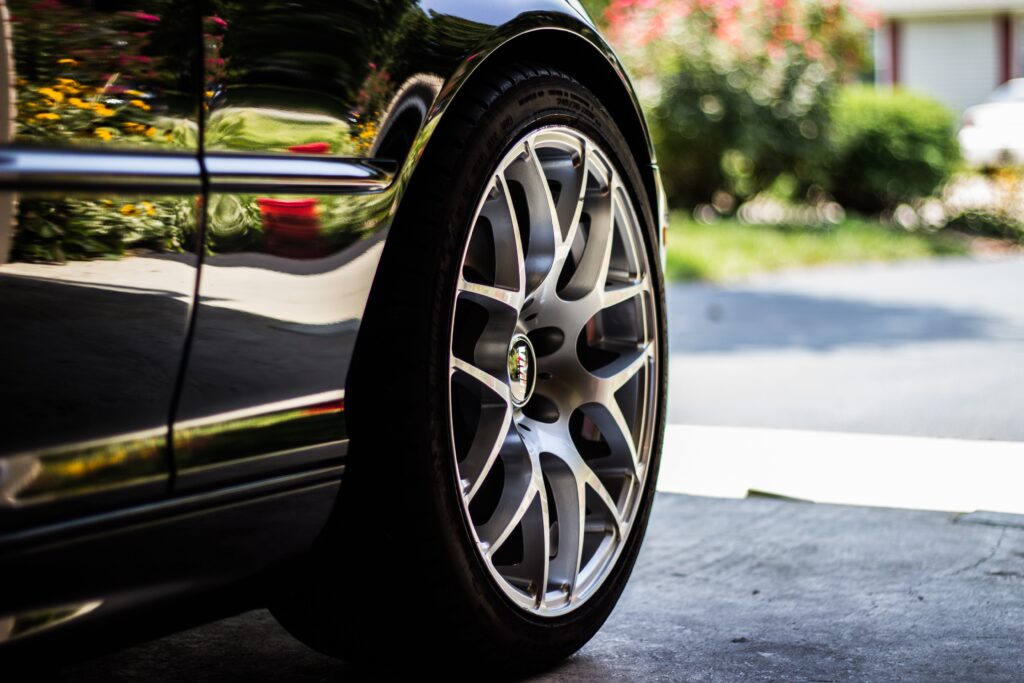Have you ever wondered about the horsepower of a portable tire compressor? If you’re in the market for a new one or simply curious about the power behind these handy devices, you’ve come to the right place. In this article, we’ll shed some light on the horsepower capabilities of portable tire compressors and how it can impact your inflating needs. Whether you’re a car enthusiast or just want to be prepared for any roadside emergencies, understanding the horsepower of a portable tire compressor is key. So let’s jump right in and discover how this power can keep you on the move.

Understanding Horsepower
Horsepower is a unit of measurement used to quantify the power or work rate of a machine, engine, or motor. The concept of horsepower originated in the late 18th century when James Watt, a Scottish inventor, engineer, and chemist, needed a way to compare the power output of his steam engines to the work done by horses. To determine the horsepower, Watt observed the average power exerted by a horse over a specific time period and calculated that it was equivalent to approximately 550 foot-pounds per second, which he rounded up to 600 to produce a more marketable figure.
Derivation of Horsepower
The term itself, horsepower, is derived from the observation that a horse can perform a certain amount of work over a given time period. In Watt’s experiments, he determined that a horse could lift a weight of 550 pounds to a height of 1 foot in 1 second, which equates to 550 foot-pounds of work per second. This then became the basis for the unit of horsepower.
How Horsepower Equates to Power
In the context of machines and engines, horsepower represents the rate at which work is done. It can be thought of as the amount of power needed to do a particular task. This can vary depending on the application and the specific machine or engine being used. In the case of a portable tire compressor, horsepower is a measure of the compressor motor‘s ability to generate the necessary force and air pressure to inflate tires efficiently and effectively.

Horsepower in the Context of Motors
When it comes to motors, horsepower is often used as an indicator of performance. The higher the horsepower rating, the more power the motor is capable of delivering. In the case of a portable tire compressor, a higher horsepower motor can provide increased air pressure and airflow, allowing for faster and more efficient tire inflation.
What is a Portable Tire Compressor
A portable tire compressor, also known as a portable air compressor or tire inflator, is a compact and lightweight device designed to inflate vehicle tires using compressed air. These handy devices are powered by either electricity or gas and come equipped with a range of features and functionalities to make tire inflation quick and convenient.
Basic Workings of a Tire Compressor
A typical portable tire compressor consists of several key components, including a compressor motor, a pressure gauge, and a hose with attachments. The compressor motor is responsible for generating compressed air that is then routed through the hose and into the tire. The pressure gauge allows the user to monitor and adjust the air pressure, ensuring that it is within the recommended range for the particular tire being inflated.

Advantages of a Portable Tire Compressor
One of the main advantages of a portable tire compressor is its convenience and portability. These devices are compact and lightweight, making them easy to carry and store in a vehicle’s trunk. This means that you can inflate your tires wherever and whenever the need arises, whether you’re on a road trip, camping adventure, or simply going about your everyday life. Furthermore, portable tire compressors often come with a range of attachments and accessories, allowing you to inflate other inflatables such as sports equipment, air mattresses, and bicycles.
Common Applications of Portable Tire Compressors
While the primary function of a portable tire compressor is to inflate vehicle tires, these versatile devices have a range of other applications as well. They can be used to inflate sports balls, inflatable pool toys, air mattresses, and even air tools. Additionally, portable tire compressors can be especially useful for off-road enthusiasts, allowing them to quickly and easily adjust tire pressures to suit different terrains and driving conditions.
Key Components of a Portable Tire Compressor
Understanding the key components of a portable tire compressor is crucial for choosing the right one for your needs and for properly maintaining and operating the device.
The Compressor Motor
The compressor motor is the heart of the tire compressor. It is responsible for drawing in and compressing the air that will be used to inflate the tires. The power and efficiency of the motor play a significant role in the overall performance of the compressor. Higher horsepower motors are generally able to deliver greater air pressure and airflow, resulting in faster inflation times.
Pressure Gauge
The pressure gauge is the interface between the user and the compressor motor. It allows you to monitor and adjust the air pressure being delivered to the tire. A clear and accurate pressure gauge is essential for ensuring that the tire is inflated to the correct pressure, as overinflating or underinflating can have adverse effects on tire performance and safety.
Hose and Attachments
The hose and attachments are what connect the compressor motor to the tire being inflated. The hose acts as a conduit for the compressed air, while the attachments, such as nozzles and adapters, allow for easy and secure connection to the tire valve. The length and flexibility of the hose, as well as the variety of attachments provided, can greatly impact the convenience and usability of the portable tire compressor.
How Horsepower Relates to a Portable Tire Compressor
Horsepower plays a crucial role in the operation and performance of a portable tire compressor. Understanding how horsepower relates to a compressor’s operation can help you choose the right compressor for your needs and ensure optimal performance.
Role of Horsepower in a Compressor’s Operation
The horsepower of a compressor motor determines the amount of power it can generate, which directly affects the air pressure and airflow it can produce. A higher horsepower motor will generally be able to generate greater air pressure and airflow, allowing for faster and more efficient tire inflation.
Impact of Higher Horsepower on Performance
A portable tire compressor with a higher horsepower motor will typically have a faster inflation rate, meaning it will be able to inflate tires more quickly. This can be especially beneficial in situations where time is of the essence, such as during a roadside emergency or when inflating multiple tires in a short amount of time.
How Horsepower Affects Power Consumption
It’s important to note that higher horsepower motors may consume more power, which can have implications for the energy source used to power the compressor. Electric-powered compressors with higher horsepower motors may require a stronger electrical supply or have a shorter battery life if operating off a battery. Gas-powered compressors with higher horsepower motors may consume more fuel. Consider the power requirements and energy consumption of a compressor before making a purchase to ensure it aligns with your available power source and usage needs.
Typical Horsepower Ratings of Portable Tire Compressors
Portable tire compressors are available in a range of horsepower ratings to suit different needs and preferences. Understanding the typical horsepower ratings of common models can help you make an informed decision when choosing a compressor.
Horsepower Ranges for Common Models
The horsepower ratings of portable tire compressors typically range from 1 to 6 horsepower. Smaller compressors, often used for smaller vehicles such as cars and motorcycles, generally have horsepower ratings between 1 and 3. Larger compressors, suitable for larger vehicles such as trucks and SUVs, can have horsepower ratings up to 6 or higher.
How Manufacturers Measure and Report Horsepower
It’s worth noting that there can be variations in how manufacturers measure and report horsepower. Some manufacturers may use peak horsepower, which refers to the maximum horsepower the motor can produce for a short period of time, while others may use continuous horsepower, which refers to the sustained horsepower the motor can deliver over an extended period. Pay attention to the specific horsepower measurement used by a manufacturer when comparing compressors to ensure an accurate comparison.
Why Different Models Have Different Horsepower Ratings
The horsepower rating of a portable tire compressor is determined by a variety of factors, including the intended application, the size and power of the motor, and the desired inflation performance. Smaller compressors may have lower horsepower ratings due to their compact size and limited power capacity. On the other hand, larger compressors may have higher horsepower ratings to accommodate the increased air pressure and airflow required for larger tires.
How to Calculate the Horsepower of your Portable Tire Compressor
If you’re curious to know the exact horsepower rating of your portable tire compressor, you can use various methods and tools to calculate it accurately. Here are a few examples of how to calculate the horsepower of your compressor:
Methods for Calculating Horsepower
One common method for calculating horsepower is to measure the torque produced by the motor and the rotational speed at which it operates. Horsepower can then be calculated using the following formula: Horsepower = (Torque x RPM) / 5252. Another method involves measuring the power consumption of the motor using a power meter or wattmeter.
Tools and Resources Needed to Measure Horsepower
To measure the torque and rotational speed of the motor, you may need specialized tools such as a torque wrench and a tachometer. A power meter or wattmeter can be used to measure the power consumption of the motor.
Examples of Calculating Horsepower
Suppose you have a portable tire compressor with a torque rating of 30 pound-feet and a rotational speed of 3000 revolutions per minute (RPM). Using the formula mentioned earlier, the horsepower can be calculated as follows: Horsepower = (30 pound-feet x 3000 RPM) / 5252 = 17.18 horsepower.
The Role of Other Performance Factors in a Portable Tire Compressor
While horsepower is an important indicator of a portable tire compressor’s performance, there are other factors to consider as well.
Pressure Rating (PSI)
The pressure rating, measured in pounds per square inch (PSI), indicates the maximum air pressure that the compressor can deliver. Ensure that the compressor’s pressure rating matches or exceeds the recommended PSI for your vehicle’s tires.
CFM (Cubic Feet per Minute) Rating
CFM refers to the volume of air that the compressor can deliver per minute. It is an important factor to consider, especially if you frequently need to inflate larger tires. Higher CFM ratings generally result in faster inflation times.
Energy Consumption and Battery Life
Consider the energy consumption of the compressor, especially if it is electrically powered. A compressor with a higher horsepower motor may consume more energy, which can impact battery life or the electrical supply required. For gas-powered compressors, consider fuel consumption and tank capacity.
Care and Maintenance of a High Horsepower Portable Tire Compressor
To ensure the longevity and optimal performance of your high horsepower portable tire compressor, it’s essential to follow proper care and maintenance guidelines.
Routine Care Tips
Regularly inspect the compressor for any signs of wear or damage. Keep it clean and free of debris. Lubricate any moving parts as recommended by the manufacturer. Store the compressor in a clean, dry, and well-ventilated area to prevent corrosion.
Troubleshooting Common Issues
If the compressor is not delivering the expected performance, check for any leaks in the hose or connections. Ensure the air filter is clean and unclogged. Verify that the pressure gauge is accurate. If you encounter persistent issues, consult the manufacturer’s troubleshooting guide or seek professional assistance.
Key Indicators of a Malfunctioning Motor
If the motor of your high horsepower portable tire compressor is malfunctioning, you may notice unusual noises, excessive vibration, poor performance, or overheating. These can be signs of motor failure or other mechanical issues. In such cases, it is recommended to discontinue use and seek professional repair.
By understanding the concept of horsepower, the key components of a portable tire compressor, and how horsepower relates to its operation, you can make an informed decision when choosing and using a compressor that meets your needs. Remember to consider factors such as pressure rating, CFM rating, and energy consumption in addition to horsepower to ensure optimal performance for your tire inflation needs. With proper care and maintenance, your high horsepower portable tire compressor can serve you well for years to come.
